In ad copy, we know that content can affect your ad performance. Headlines, keywords, or even the CTA can impact the ad performance. It is well known that the right landing page can affect conversion rates. Does the URL displayed in your ad make a difference in performance? In this article, we are going to show you that it can make a difference.
Display URL Examples
Using PPC landing pages is not an uncommon practice in helping to measure performance. In this screenshot, we see ads from Gap and Shein that are using a sub-domain in their ads.
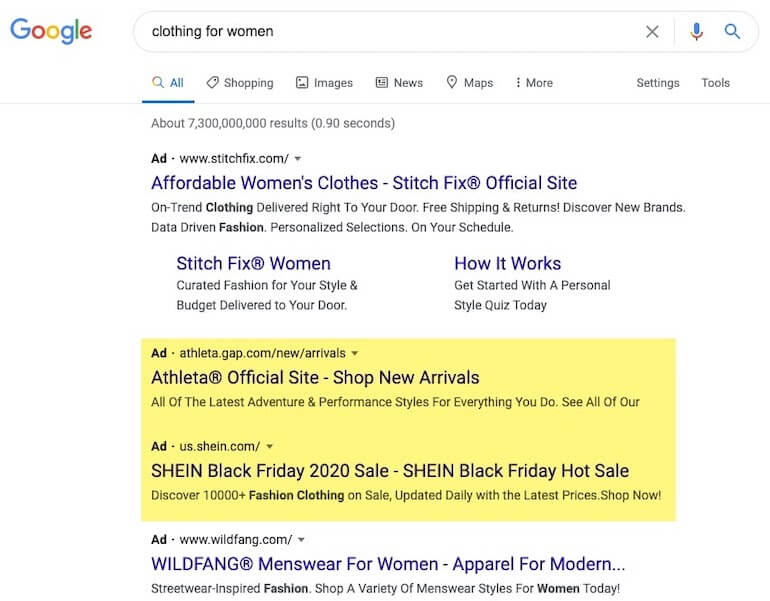
Here is another example from Dell. Oftentimes, advertisers will use subdomains like Deals, Shop, or Coupons. In this screenshot, we see Dell is using deals.dell.com in their final URL.
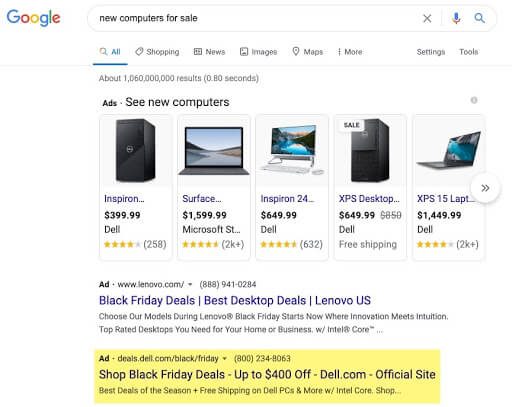
A Display URL Test With Subdomains
For one brand, we had many challenges with tracking due to the large volume of phone numbers displayed on their website. We were able to set up Google website call tracking, but this only worked for their primary toll-free number and not for the local phone numbers. Analytics was able to track the click-to-call activity for all phone numbers, but this was not ideal because it was unable to measure the duration of the call. The best option may have been using a third party call tracking service, but this was not an option for this brand.
So, one recommendation we had was to set up a PPC landing page that would display one primary phone number which would allow full visibility into call quality. One challenge was the brand was unable to set up a page on their primary domain, so we created a separate domain. All ads were redirected to this domain and nothing else was changed in the ad copy. Another thing to note is this client has several Brand campaigns targeting different regions of the country.
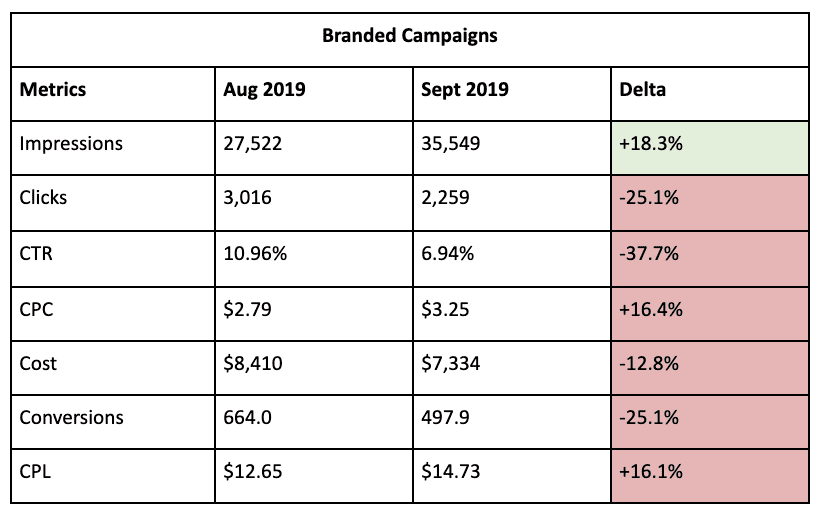
As you can see in the Branded campaign, the costs were 12% lower, impressions increased by 18%, and CPCs increased by 16%. The conversions decreased by 25% and the CPL increased by 16%. Updating the ads can reset the ad quality score and this could have contributed to the higher CPCs we saw here. However, the metric that stood out the most for me was the impact it had on our CTR. Less searchers were clicking on our ad with the subdomain as the display URL, compared to the original ads.
The Non-Brand campaign performance was not impacted to the same degree as the Branded campaign. The CTR decreased by 7%, CPCs were 2% lower, conversions increased by 21%, and the CPL was only 5% higher.
One theory was that customers may have trust issues with the domain displayed. That perhaps they could see the organic listing below and were clicking on that instead. In the Non-Brand campaigns, their organic listing was less likely to show in the #1 organic spot due to the competition. The CTR did improve the next month, but only to 5.99%. In Analytics, we do see Organic traffic did have a 17% lift. However, the campaign lost less than 1,000 clicks, and so this traffic increase may or may not have been related.
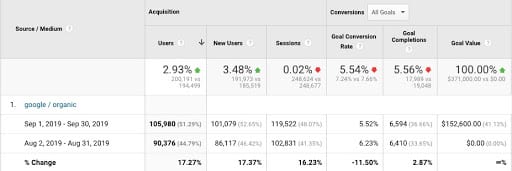
Over the next few months, the CTR never recovered and the conversion performance remained flat through the end of the year. Our primary concern was that searchers may have trust issues with the domain we were using and that may impact the brand negatively.
To test our theory, we ran a split 50/50 test with the primary domain in our experiment. This was the only thing we changed in the ads.
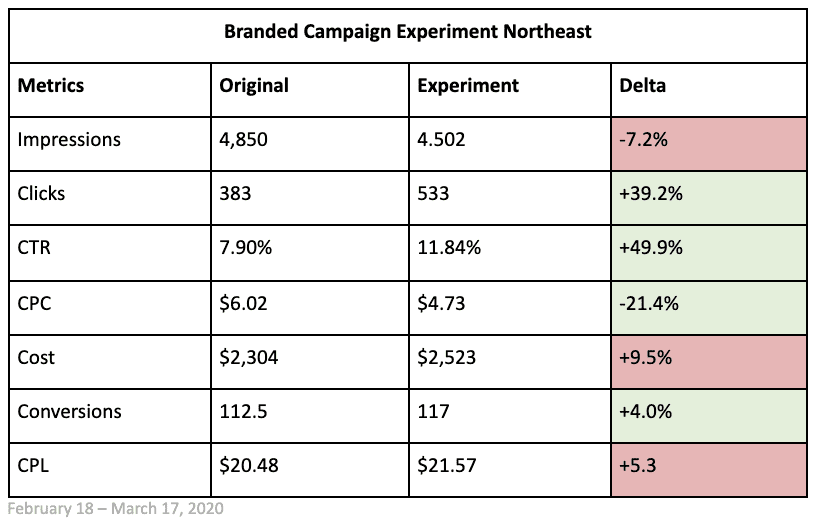
The experiment showed the CTR was nearly 50% higher when the main domain was used, instead of the subdomain. This improvement in the CTR may have contributed to the 21% decrease we saw in the CPCs. This data suggests the CTR may have been a bigger factor to the higher CPCs when we updated the domains originally. This also showed us that searchers clicked on our ad more frequently. The results of this test suggested the searchers may have had trust issues with the domain displayed in our ads, especially for Brand ads.
In this next test, we updated another campaign to the primary domain
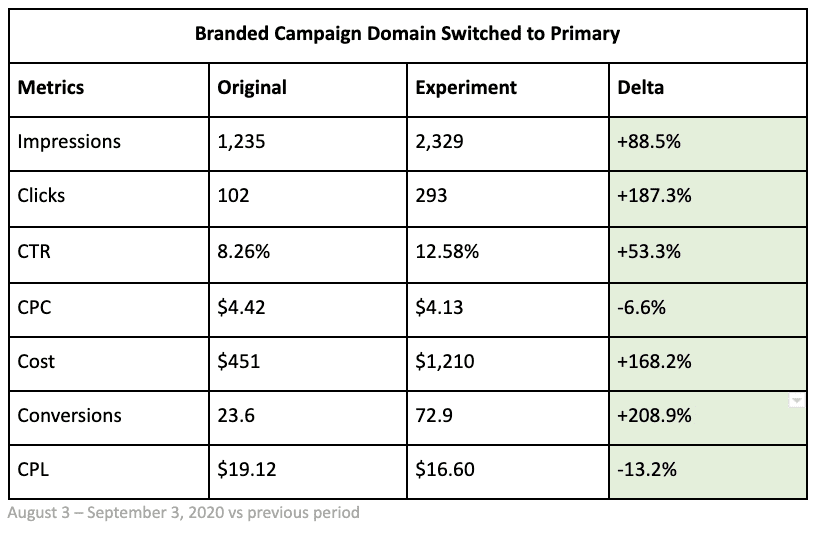
The change in performance was immediate and significant. The CTR was 53% higher, CPCs were slightly lower, and the costs did increase.
In Analytics, the Organic traffic did not decrease after we made this change suggesting there could have been incremental lift in clicks. Google states that a portion of search ads are incremental. It also supports a theory that having Brand ads and organic in the same auction provides an incremental lift in traffic. You can also read another article about What happened when we Paused Brand ads.
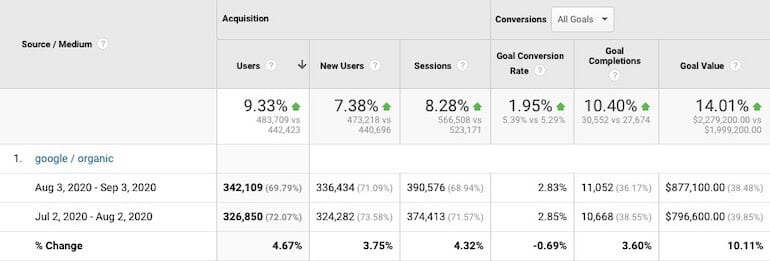
One thing we know for certain in this case is that using a different domain for our ads had a negative impact on performance. Switching back to the primary domain had a significant impact in the CTR for every campaign. Additionally, the CPL has decreased by 23% for Brand campaigns since making the change.
If you are using a PPC landing page or a sub domain, it may be worth running some experiments to determine if your display domain is hindering performance or increasing your costs.




